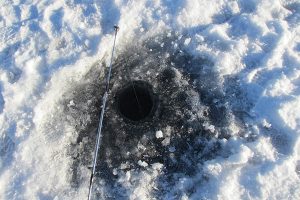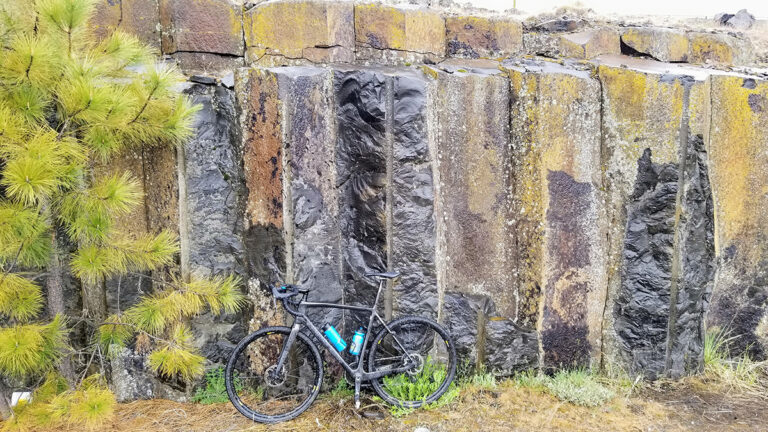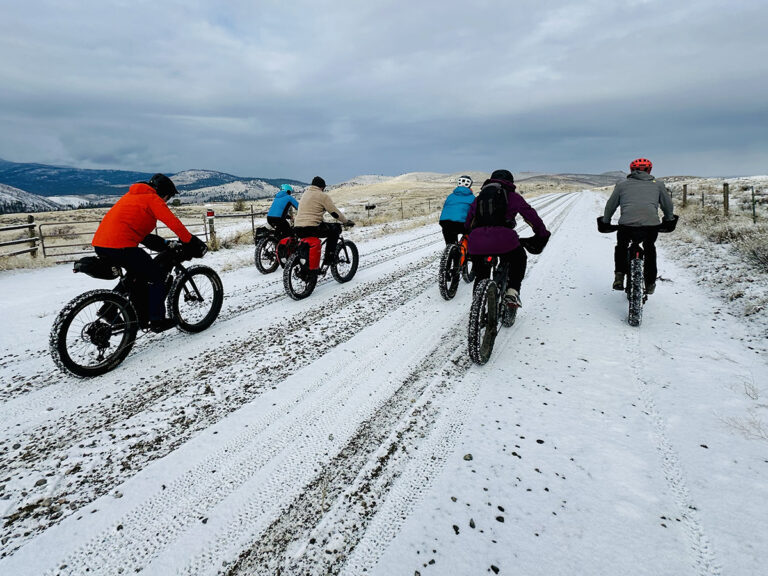The Inland Northwest is a wonderful region for ice fishing, and a fresh-caught perch dinner in January is worth the cold toes. As with any activity, better gear makes for a better experience, but you likely already have almost everything you need to get started.
The first and most important consideration is safety: Never venture onto thin ice. According to the Washington Department of Fish and Wildlife, at least four inches of clear, strong, new ice is needed to safely support a person, and more is needed for snowmobiles and other heavy equipment. White ice is not as strong as clear ice, and lakes are typically more dependable than rivers and reservoirs. Ice thickness can vary, so make test holes every 150 feet, starting at the shore. Use a tape measure to check, or bring a slotted, bent ladle with inches premarked on the handle, which you can also use to clear the hole of ice when fishing. Never make a hole wider than 10 inches.
Ice augers are the most popular hole-makers. Manual versions are inexpensive, but if you want to forgo the initial investment, go to a popular lake at noon on a Saturday. When morning anglers head home, you can often reuse their abandoned holes. Just be respectful and make sure they’re truly abandoned.
Wear thick-soled boots and many layers to insulate yourself. Tow extra clothes, food, water, and matches in a sled, or carry them in a bucket you can also sit on. Pack a rope in case someone falls through, and avoid fishing alone. Be courteous and give others space, but be friendly and wave; experienced anglers often relish helping respectful rookies.

Aside from a fishing license and parking passes, you don’t need much gear to get going. Many people prefer a short ice fishing rod with light line for maneuverability, but a regular rod can work, too. Small floating bobbers or wire spring bobbers can help you detect light bites. The traditional hook, worm, and sinker setup can be productive, but small jigs and spoons like the Swedish Pimple seem to attract more bites, especially when baited. “Our most popular bait during the ice season is maggots,” says Jeff Smith of Fins & Feathers Tackle Shop in Coeur d’Alene. “A jig and a maggot will catch anything, really.”
To begin, fish within a foot of the lake bottom. “Be able to make contact with the bottom,” Smith explained. “Whatever jig you’re using, if it’s too light to get that feel, add some weight so that you can get it down there.”
Sometimes a still presentation works; other times a jigging action is better. Fish will swim at different depths, so if the bottom proves unsuccessful, reel up half a crank and wait, repeating the process while keeping track. Once you find a depth that works, stay there until it’s no longer productive.
While some of our area waters are closed during winter, others are only open during ice season, and with a copy of the fishing regulations you can find many options. Follow the laws, handle fish minimally, and quickly release fish if you won’t keep them. Keep it simple to start. If you like fishing hard water, lots of toys like fish finders and shelters are available to make ice fishing even more comfortable, successful, and fun.
Drop a Line Here
Eloika Lake (Spokane County) – With crappie, bullhead, trout, bass, sunfish, yellow perch and more, you never know what you will reel in at Eloika Lake. Special size and keep limits apply to crappie, bass and trout, so bring a ruler and regulations alongside your parking pass.
Fernan Lake (Kootenai County) – Smith of Fins & Feathers says Fernan Lake just outside of Coeur d’Alene is a good place to start. With perch, bluegill, trout, pike and more, “You can fish for just about anything there, so it’s a cool little lake.”
Round Lake (Bonner County) – If you have kids, Smith says Round Lake is a good multi-use destination. It’s a state park so there’s a $5 vehicle fee, but the lake is small and easy to navigate, and sometimes they have an ice skating area brushed off in case the fishing’s slow. // (Chris Lozier)
Chris Lozier writes about food, drink, small business, and fishing. Read more of his writing at chrislozier.com.











